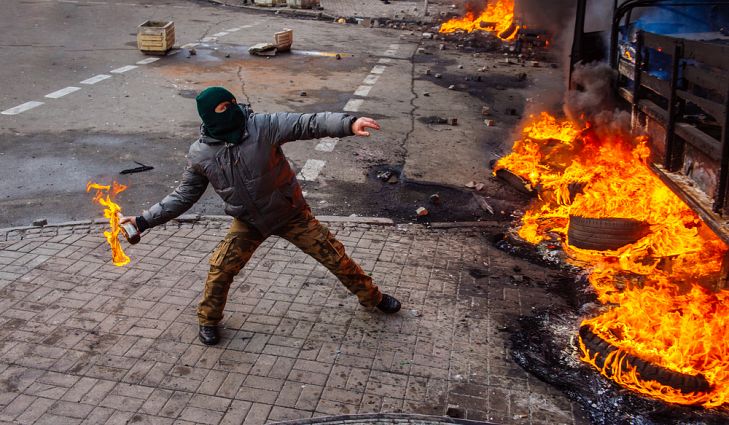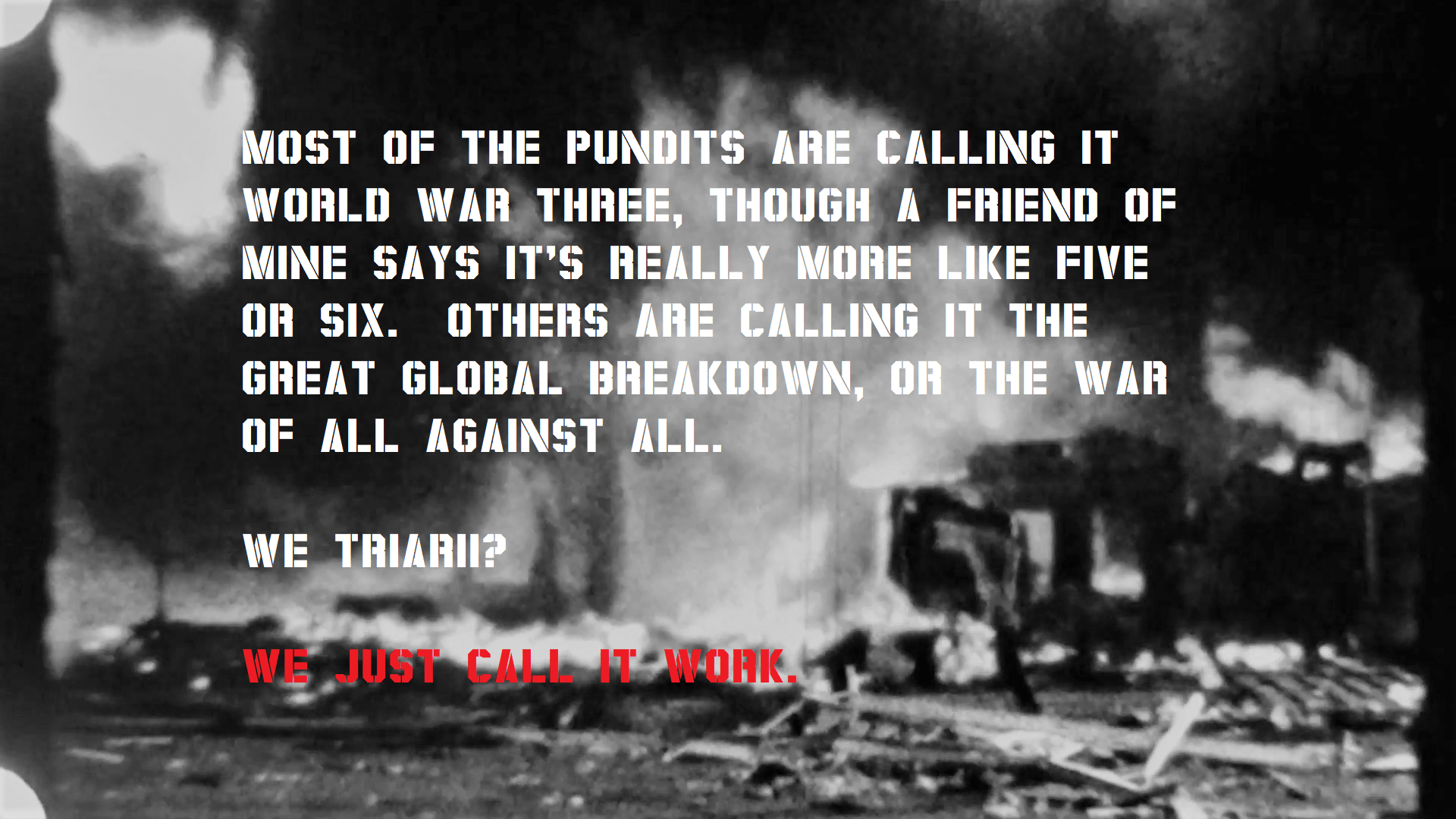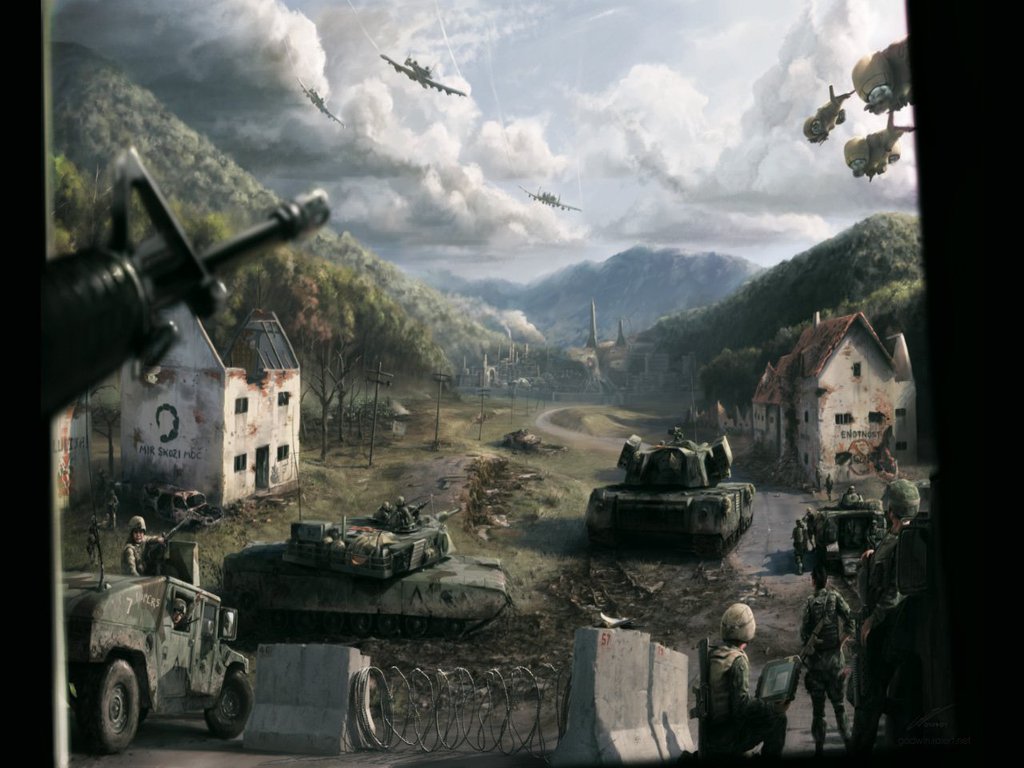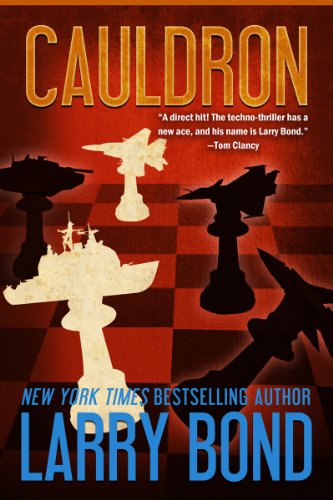I first read Cauldron in high school, and at the time, I remember that it didn’t make as much of an impact on me as Red Storm Rising, Red Phoenix, or even Vortex did. A new war in Central Europe seemed somewhat more far-fetched at the time than chaos in Africa or East Asia. (I was in high school; I didn’t know nearly as much as I might have thought that I did.) But in prep for Maelstrom Rising, I picked Cauldron back up. And I’ve got to say, Larry Bond was a lot more prescient than he seemed, back in ’93. While the general scenario in Cauldron is the French and Germans enforcing their economic hegemony over Eastern and Central Europe by force of arms, effectively forming the European Union at gunpoint (referred to as the European Confederation, or EurCon in the novel), the fault lines that lead to the scenario are even now playing out, only slightly differently.
Setting the Stage Part 3

By the beginning of the Maelstrom Rising series, the global order as it has existed since shortly after the fall of the Berlin Wall and the collapse of the Warsaw Pact is disintegrating. This is happening for reasons cultural, political, and economic. Culturally, the European Union is already fracturing as this is written. There is no “European Identity,” no matter how hard the EU Parliament has attempted to enforce it, and the influx of immigrants from the Middle East and North Africa has been a source of friction in France for decades, even before the more recent push to accept hundreds of thousands from Syria, which has resulted in an uptick of terror attacks, to include truck attacks on Christmas markets and other crowds in Germany. An increasingly large segment of the populace of Western Europe is beginning to resent the imposition of the will of the elites, most evident in the Yellow Vest protests in France, which began over gas taxes, but became much wider in scope, including over President Macron’s signing of the UN resolution declaring unfettered migration as a fundamental human right, despite the majority of Frenchmen opposing such a treaty.
Setting the Stage Part 2

While the first-person narrative of the Maelstrom Rising series will limit each book or phase to a particular theater, the events of the series will have global scope. The interconnectedness of current global politics and economics mean that when the order breaks down in one place, there will be ripples elsewhere. And multiple simultaneous such breakdowns lead to the perfect storm that is Maelstrom Rising. The events in East Asia and the Western Pacific during this series will be rooted in current trends already happening over the last ten years or more. While most open focus has been on China and North Korea (which will be dealt with in later installments of this article series), this article will look at the near future of Japan. Specifically, the near future of Japan as a military power.
Setting the Stage, Part 1

The idea for my current work in progress came a couple years back. It involved a complete breakdown in what we have come to consider the “global world order” since the disintegration of the Soviet Union and the paradigm shift represented by Operation Desert Storm (though the whirlwind victory and subsequent return to the status quo represented by that short-lived war turned out to be more of a fluke than a lasting reality, despite it forming the basis for most of Tom Clancy’s post-Cold-War fiction). While the American Praetorian series had already represented some of a similar model of breakdown, it was largely focused on the continuing war against jihadism, and that war’s unintended consequences. This is something different.
Weapons for Near-Future Settings and “Kraut Space Magic”

I’ve had to do some research into possible near-future weapons systems for a couple of series, now. If you’ve read The Colonel Has A Plan, you might have noticed that the Marines under Colonel John Brannigan are using M27s and LSAT machineguns instead of the current M4s and M249s or M240s. Similarly, the Marines at Camp David in Lex Talionis are armed with M27s. Now, arming Marines with M27s is an easy choice, since the Marine Corps recently announced a wider deployment of the glorified HK 416s, but it touches on a common theme when writing near-future military fiction. Including new weapons and gear that isn’t necessarily in common use yet helps to establish your setting.
The Key To Authentic Combat Action Scenes
What’s the key? What makes a combat scene really “authentic?” Pain. There’s an old saying in the Recon community: “Recon ain’t fun.” It’s pain and agony and suffering, only faced with the grit and perseverance to get through it and survive, to kill the enemy before they kill you. Over on Tom Kratman’s wall on FB, the subject has come up of a young woman on a panel at Life, The Universe, And Everything 2017. She claimed at one point that “gamers can write good action scenes, because we’ve experienced that.” No. No, you haven’t.
Overtaken By Events
“Timeliness” is a temptation that I think most military/spy fiction writers have to deal with. “Ripped from the headlines!” and “Prophetic!” are compliments that reviewers have used for works in the genre going back to Tom Clancy, at least. Those same phrases have been applied to some of my own work, and I’ll admit that it can be somewhat affirming (though often in a grim sort of way) to see events move in a generally similar direction to that predicted in one of your novels. It shows you that you read the situation fairly accurately.
Cheah Reviews American Praetorians
Over on Steemit, Ben Cheah has posted his review of the entirety of the American Praetorians series. It’s mostly praise, with some critiques. Read it here. I can’t say I disagree with any of his critiques, though I’ve seen the opposite comments on the Jeff-Mia thing. Needless to say, there’s a reason I’m not a romance author. But I learned a lot writing that series, and they are lessons that I hope I’m applying well to the Brannigan’s Blackhearts series.
Why I Write Mercs
Mercenaries haven’t really been a staple of mainstream thrillers since the ’80s. Tom Clancy introduced Jack Ryan, an analyst, as the hero of his techno-thrillers, and it seemed to set the tone for much of the genre to come. Harold Coyle’s heroes were mostly tankers. Dale Brown’s were bomber pilots. As the GWOT got started, even the more shadowy operatives, like Vince Flynn’s Mitch Rapp and Brad Taylor’s Pike Logan were still directly operating within the government apparatus, if so black that they “didn’t exist.” So, why did I go with mercenaries for the Praetorian series, Kill Yuan, and the Brannigan’s Blackhearts series? Well, I think that has several answers.
The Writer Master Plan
Back in June, Nick Cole and Jason Anspach released a military SF novel entitled Galaxy’s Edge: Legionnaire. I’d been peripherally aware of Mr. Cole for a while, ever since Harper Voyager kicked him to the curb for political reasons. But what he and Anspach pulled off made me sit up and take notice. Because Legionnaire, a brand-new, independently-published mil-SF novel, shot to the top 100 on Kindle, and #1 in its categories, and proceeded to stay there. For weeks. And they made no secret that they wanted to share how they did it with other authors. I talked to Mr. Cole myself for a bit, and got the gears turning, even before they released their After Action Report podcast. Cole pointed me toward the non-fiction work of Chris Fox, who has been studying what works in independent publishing, specifically Amazon, for some time. I started doing some more reading.
